Start Here
Homepage Bottom Form
We will get back to you as soon as possible.
Please try again later.
Essential Documents and Evidence to Gather After a House Fire
🔥 Documents and Evidence to Gather for Your Fire Insurance Claim
(A complete checklist from House Fire Solutions to help you get every dollar you deserve.)
This list is designed for
homeowners and property owners who’ve recently suffered a house fire — whether they’re filing independently or working with adjusters or restoration pros.
It can be used for your
website,
client guides, or turned into an
Excel checklist or
printable PDF for homeowners.
🧾 1. Core Insurance and Identification Documents
These are the documents that prove ownership, coverage, and identity.
Gather immediately:
- Homeowners insurance policy (full policy + declarations page)
- Insurance claim number and adjuster’s contact info
- Mortgage documents or property deed
- Driver’s license or government-issued ID
- Social Security cards (for proof of identity on claims)
- Lease agreement (for tenants or landlords)
- Proof of home ownership or title report
- Recent mortgage statement or escrow info (for payoff verification)
- HOA or property management contact details (if applicable)
- Prior insurance correspondence (renewals, amendments, or endorsements)
🏠 2. Fire Department and Official Reports
Official records help establish the cause and timeline of the fire.
Gather these as soon as available:
- Fire Department Report (official incident report)
- Fire Investigator’s Report (if cause determination was made)
- Police or incident report (if arson, vandalism, or electrical fire suspected)
- City or county building inspection report (structural safety)
- Permits or red-tag notifications from local officials
- Utility disconnection records (gas, power, water)
📸 3. Photos, Videos, and Visual Evidence
Visual documentation is your
most powerful proof for your insurer.
Capture or organize:
- Photos of the exterior (all sides of the property)
- Photos of interior damage, room by room
- Videos showing the overall property condition after the fire
- Photos of each damaged item (furniture, appliances, clothing, etc.)
- Close-ups showing serial numbers, tags, or model labels
- “Before” photos (from your phone, social media, or home tours)
- Photos of emergency repairs (board-up, tarp, cleanup, etc.)
- Date/time-stamped images (keep file metadata intact)
- Aerial or drone photos (if accessible)
📦 4. Proof of Ownership and Home Contents Inventory
These records prove that you
owned the damaged items.
Gather:
- Original purchase receipts (electronics, furniture, appliances, tools)
- Credit card and bank statements showing purchase history
- Warranties, product manuals, or serial numbers
- Home inventory lists (if you had one prior to the fire)
- Photos of items in use (from social media or family photos)
- Appraisals (for jewelry, art, or collectibles)
- Gift receipts or estate records (for inherited items)
- Professional valuation documents (if available)
- House Fire Solutions Home Inventory Spreadsheet (recommended tool)
💵 5. Financial and Expense Records
Expenses you incur
after the fire may be reimbursable under Additional Living Expenses (ALE) or Loss of Use coverage.
Gather:
- Hotel or temporary housing receipts
- Rent or lease agreements for temporary lodging
- Meal receipts, grocery bills, and delivery charges
- Transportation expenses (fuel, rental car, public transit)
- Storage unit rental receipts
- Laundry, dry cleaning, or clothing purchases
- Pet boarding or veterinary receipts
- Utility bills for temporary residence
- Childcare or school-related transportation receipts
- Replacement of essential items (toiletries, medical needs, etc.)
- Credit card statements to support all receipts
- Fire cleanup and mitigation invoices (board-up, debris removal)
- Any deposits or payments made to contractors
- Copies of checks, Venmo, Zelle, or wire payments related to recovery
- Copies of all invoices submitted to your insurance company
🔧 6. Home Repair and Contractor Estimates
Insurers require itemized repair and restoration documentation.
Gather:
- Estimates from licensed contractors (at least two or three)
- Detailed line-item quotes for materials and labor
- Roofing, HVAC, electrical, and plumbing inspection reports
- Structural engineering reports (if applicable)
- Cleanup or restoration company quotes (smoke, soot, water mitigation)
- Photos or diagrams provided by contractors
- Copies of permits and inspection sign-offs
- Signed contracts and warranties from any ongoing work
- House Fire Solutions Vetted Contractor List (recommended reference)
📑 7. Insurance Claim Documentation
Everything related to your
communication and correspondence with your insurer.
Keep:
- Claim number and adjuster’s full name/contact
- Copies of all claim forms submitted
- Emails, letters, and text messages with your adjuster
- Adjuster’s written reports and valuation summaries
- Coverage explanation letters
- Settlement offer letters and breakdowns
- Checks and payment summaries (dwelling, contents, ALE)
- Proof-of-loss forms (with your signature and submission date)
- Appeal or dispute letters
- Adjuster inspection notes or photos (if available)
💬 8. Communication & Claim Log
Keeping a clear paper trail is key to avoiding misunderstandings.
Maintain:
- A Claim Communication Log with:
- Date/time of call or meeting
- Name and title of person spoken to
- Summary of conversation
- Next steps or promised follow-up
- Printed or saved email threads
- Notes from in-person inspections or meetings
- Calendar reminders of claim deadlines
🧑💼 9. Professional Assessments and Third-Party Reports
Independent experts can help confirm or support your claim.
Gather:
- Independent appraiser reports (personal property or structural value)
- Environmental testing results (air, asbestos, lead, mold)
- Electrical, plumbing, or HVAC inspection reports
- Smoke residue analysis (if disputed coverage)
- Contractor written evaluations
- Public adjuster reports and valuations
- Attorney correspondence (if legal support is needed)
🧰 10. Rebuilding and Restoration Documentation
Once work begins, continue keeping organized documentation.
Gather:
- Contractor invoices and receipts
- Material and supply receipts (paint, drywall, flooring, etc.)
- Permit applications and final inspection reports
- Change orders or upgrade approvals
- Completion certificates or lien releases
- Progress photos at different rebuild stages
- Payment receipts and proof of deposits
🧯 11. Personal, Emotional, and Health-Related Documentation
These may be relevant for certain coverages or future records.
Gather:
- Medical records (if injury or smoke inhalation occurred)
- Prescription receipts for replacements
- Counseling or therapy receipts (post-trauma care)
- Pet medical records or replacement costs
- Letters or statements for sentimental losses (for valuation context)
🧠 12. Optional But Valuable Supporting Materials
Extra documentation that strengthens your claim:
- Appraisal reports for high-value items
- Home inspection reports (before the fire)
- Photos of home upgrades or renovations
- Copies of home improvement permits
- Home maintenance records (roof, HVAC service, etc.)
- Security camera footage (if available)
- Witness statements from neighbors or tenants
- Insurance agent emails confirming previous coverage changes
🧩 13. Digital Organization Tips
Keeping your evidence organized can speed up your claim by weeks.
Pro Tips from House Fire Solutions:
- Create a Google Drive or Dropbox folder labeled “Fire Claim – [Your Last Name].”
- Subfolders to include:
- 📁 Photos & Videos
- 📁 Receipts & Expenses
- 📁 Insurance Communication
- 📁 Contractors & Estimates
- 📁 Official Reports
- 📁 Settlement & Payments
- Back up all files to at least two locations (cloud + external drive).
- Keep physical copies in a fireproof document safe.
💡 Final Tip from House Fire Solutions
The more you document, the stronger your claim.
Photos, receipts, and written proof often make the difference between getting paid what you deserve and settling for less.
Our Team Helps You Navigate Insurance, Restoration, and Rebuilding
It is a long established fact that a reader will be distracted by the readable content of a page when looking at its layout.
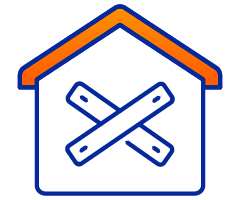
Board-Up
Our Network of Board Up Specialist Will Secure your property fast
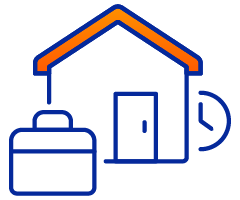
Temp Housing
We'll Help You Find Safe Shelter while you recover
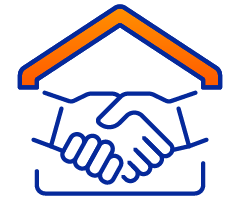
Public Adjusters
Our Network of Fire Damage Adjusters Will Fight Help for a fair insurance payout
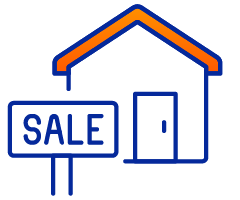
Investors
Our Partner Specializes in Buying Fire Damaged Homes So you Can Sell your home as-is

Content Cleaning
Restore what matters most
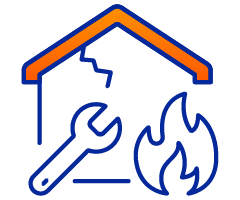
Restoration
Bring your home back to life
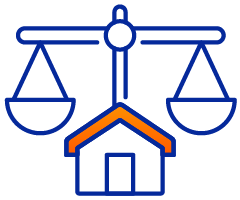
Attorneys
We have a network of Protect your rights and claims

Mental Health
Support for you and your family
Want To See If We Can Help You
If you'd like to speak with us today about purchasing Social Security, Personal Injury, Workers' Compensation or Employment Law Leads.
Homepage Bottom Form
We will get back to you as soon as possible.
Please try again later.